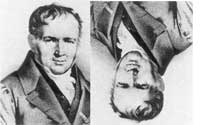 Now
Now
that versions 2 and 3 of my abandoned book project
noncommutative~geometry@n are being referenced (as suggested) as
“forgotten book” (see for example Michel's latest paper) it is
perhaps time to consider writing version $\\pi$. I haven't made up
my mind what to include in this version so if you had a go at these
versions (available no longer)
and have suggestions, please leave a comment. An housekeeping-note :
this blog is flooded with link-spammers recently so I did remove the
automatic posting of comments. I use the strategy proposed by Angsuman to combat
them. This sometimes means that I overlook a comment (this morning I
discovered a lost comment while cleaning up the spam-comments, sorry!)
but it is the only way to keep this blog poker-casino-sex-etc free. It
goes without saying that any relevant comment (positive or negative)
will be approved as soon as I spot it.
At the moment I
haven't the energy to start the writing phase yet, but I am slowly
preparing things
- Emptied the big antique table upstairs
to have plenty of place to put things. - Got myself a laser
printer and put it into our home-network using AirportExpress which
allows to turn any USB-printer into a network-printer. - Downloaded the Springer Verlag Book Stylefiles svmono.zip. This
does not mean that I will submit it there (in fact, I promised at least
one series-editor to send him a new version first) but these days I
cannot bring myself to use AMS-stylefiles. - Accepted an
invitation to give a master-course on noncommutative geometry in Granada in 2005 which, combined with
the master-class here in Antwerp next semester may just be enough
motivation to rewrite notes. - Bought all four volumes of the
reprinted Winning Ways for your
Mathematical Plays as inspiration for fancy terminology and notation
(yes, it will be version $\\pi$ and _not_ version $e$). - etc.

